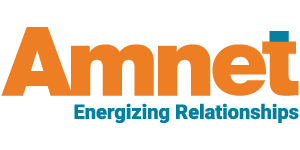[Approximate Reading Time : 4 mins]
ePublishing for eLearning
Educational publishing, or ePublishing, has become inevitable in the present. eBooks are a common commodity generating significant revenue for publishers. eLearning needs that and much more. Digital learners look for an enhanced user experience with tweaked content and performance-tracking tools. K–12, higher education, and expert courses are now available on mobile devices anywhere and at any time. Digital education publishing mainly publishes eBooks, online magazines, and online inventories among others.
Benefits of Focused ePublishing
Publishers can find their place in the global market only with advanced eLearning solutions, as digitalization alone is a thing of the past. In recent years, digital learning has become a norm due to the pandemic, and many people are looking for smart learning content that can provide them with a better learning experience. If publishers can be flexible in addressing their requirements, they can extend their reach to a wider audience. Authoring tools can speed up content creation, correction, and update. Embedding links and directing readers to other content are also easier.
ePublishing Formats
- EPUB: This format can be read on Kindle, mobile phones, tablets, and most eBook readers. It allows multimedia and few interactivities. Since it is standardized, delivery through many platforms is possible.
- MOBI: It was developed for the MobiPocket Reader and is a limited format for Amazon eBook, so it is fully dependent on Amazon and Kindle. MOBI can be used in PC and Kindle for Mac and iPad, and certain PDAs and mobile phones. MOBI files are often converted to other formats to enable widespread use.
- IBA: IBA organizes books created with Apple’s iBooks Author application and is similar to EPUB. It supports multimedia content and intelligent components. But only the iBooks Store can deliver IBA’s content.
- AZW: AZW is compatible with all Amazon Kindle products, but other commonly used devices can only access AZW data. It supports bookmarks, explanations, and functionalities in its documents. The majority of Amazon books are in this format.
- PDF: This is the most familiar format that Adobe has made popular. The configuration supports passwords, and semantic designs along with images, embedded textual styles, and complex typesetting. PDF is compatible with almost all devices, and most content already exists in this format.
- HTML5: HTML5 is mobile friendly, standardized, and popular. Cross-platform compatibility and endless options to add resources and interactivities are the pros.
- XMT: It is a high-level XML-based format used for storing content that can be edited further and then for distributing the finished content.
Deciding which format to use to publish eLearning content can be a difficult task. It mainly depends on the time you have to produce and deliver, how much you can invest, how the market will receive your content, when you can utilize, and the right partner to carry out the process efficiently.
Partner with Amnet to provide the optimal experience for your eLearners by modernizing your content with our technological solutions. Our eLearning solutions https://amnet-systems.com/services/elearning/ and conversion services are customizable, including design, coding, testing, and deployment across various platforms.
Sources:
1. https://www.suntecindia.com/blog/top-epublishing-formats-to-help-you-go-from-print-to-digital/.
2. https://elearningindustry.com/from-print-to-digital-7-formats-educational-epublishing.


